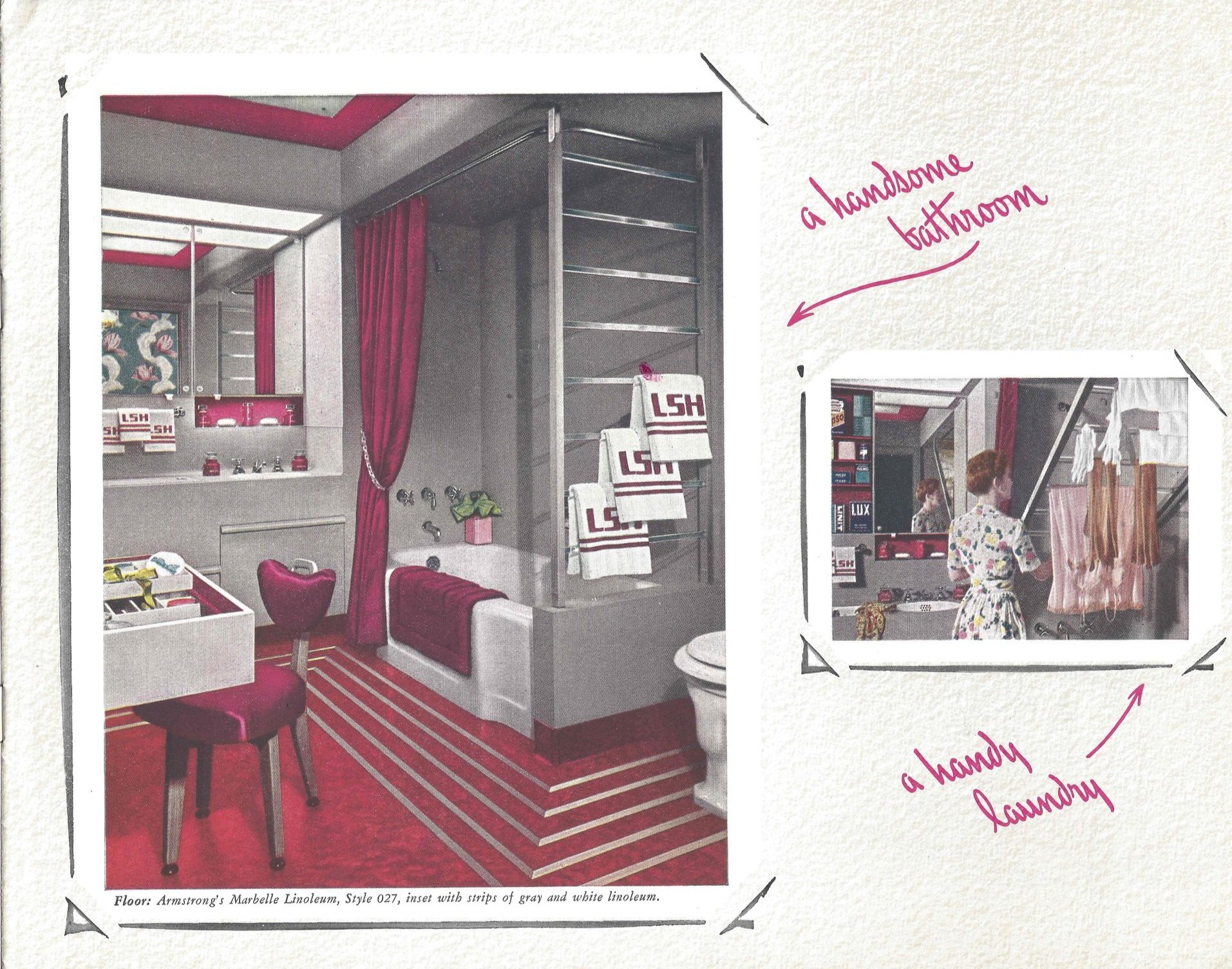Hazel Dell Brown
The Most Famous Designer You’ve Probably Never Heard Of
My guilty pleasure? Looking at every single flipped house in Lancaster County. I adore perusing the rooms, studying the details—from light switches to flooring. But my favorite room to explore is always the kitchen. I’m so often impressed by the crisp, clean details—these days, you’ll find mostly white cabinets, light tile or wood floors—all very Scandinavian in its feel.
So it surprised me one day when I came across a Pinterest board showcasing kitchens and other rooms saturated with color and coordinated details. The drawings, though full of decorative details, did not look crowded or old—but rather, cozy, warm, and surprisingly fresh. The Pinterest board noted that the drawings were done by the Chief Interior Designer for Armstrong Industries between the years of 1921 and 1957: Hazel Dell Brown. Most of the illustrations came from Armstrong catalogs that were produced during her tenure at the company. Off I went, searching for one of these catalogs in real life. I was rewarded with a catalog that, though it lists no copyright date, is most likely from the early 1940s. I felt like I’d discovered a treasure: 32 pages of exquisite Hazel Dell Brown designs and her words of inspiration.
In 1921, Brown—a home economics teacher and young WWI widow living in Indianapolis—applied to a job she found in a newspaper ad: heading up the newly created Interior Decoration division of Armstrong Industries. For the next 30 years, her designs could be found in every major magazine, were copied and used on movie sets, and were seen in beautiful ads and catalogs. These catalogs have since become collector’s items.
Room-by-room, her catalogs feature color drawings, Brown’s notes, and how-to directions for recreating her designs. (Of course, her directions always included the installation of an Armstrong floor—most often a color-coordinated linoleum.) Designing for small spaces was her specialty; she could make every square inch of a room useful. Her designs are both practical and beautiful. In interviews, Brown discussed her favorite piece: the ‘all-in-one closet’. It’s compact, yet holds all of the items you might need for the kitchen—spices, mixing bowls, etc. She also writes that when the two doors are closed it can become, “a home-painted mural of the town (a pretty scenic wallpaper would also be effective).”
In these Armstrong catalogs, Brown sells not just easy-to-clean linoleum, but also inexpensive dream rooms for housewives the world over. In interviews, she shared that she would often send out small samples of upholstery cloth, wallpaper, and flooring; when a customer received their catalog, those extra surprises arrived with it, to inspire and aid customers in their decorating. She also shared that people would sometimes write to her with specific requests—i.e. inquiries on how to make plans for redoing an attic, fit a washer and dryer in a small house with no basement, or update old Victorian furniture for a more modern look. She gathered those ideas and used them in her work to create living, colorful masterpieces for Armstrong.
During her time in Lancaster, Brown developed a wide network of friends. She was both a career woman and a caretaker for her mother. According to interviews, she was also active in the Unitarian Universalist Church in Lancaster City, and regularly attended productions at the Fulton Theatre. When she retired from Armstrong, her designs lived on in her catalogs and were often adopted by other interior designers. Simply open an issue of Better Homes and Garden from 1950 and you’ll see her influence: colorful rooms, a wise use of space, and color-coordinated flooring.
After her mother passed, Brown designed her own house on N. Charlotte Street in downtown Lancaster. In a mere 1,100 square feet, she created her dream home—a space where every inch was used to her advantage. She described the home as, “stripped down, sparse, but eminently comfortable.”
Hazel Dell Brown has been described as the most influential residential interior designer you’ve never heard of. But, as we collectively move away from McMansions and look for ways to live smaller, simpler, and more efficiently, I believe that we should rediscover Brown and her work. Her designs provide the feeling of beauty and safety that we are all looking for, but in an affordable and realistic way. Especially during this time of Covid-19, as many of us have reconsidered what is truly important, rediscovering Lancaster’s own Hazel Dell Brown can teach us how to combine beauty and efficiency, just as she did in the last century.
By: Marian Pontz
Photos from “Album of Room Ideas” published by Amrstrong Cork Company, 1945









